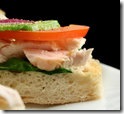The body’s main source of energy is glucose, which is a type of sugar. The body gets sugar from 2-major sources:
- The foods that you eat, and
- The sugar that your liver makes when you have not eaten food
It is really important to balance the level of sugar in your body. Your body helps to do this by releasing insulin, which is a hormone made by the pancreas. Insulin moves the sugar from your blood into your cells to use for energy.
Diabetes is a disease of high blood sugar.
A person with type 2 diabetes may not have enough insulin, or the insulin that the body makes may not work as well as it should. This causes the blood sugar level to become out of balance because it gets too high.
Symptoms of high blood sugar include increased thirst, increased urination, weight loss, and blurred vision. Uncontrolled high blood sugar, when present for a long time, can cause health problems, such as heart disease, kidney disease, blindness, and poor circulation, which may lead to limb amputation. Sometimes the liver makes more sugar than the body needs, which causes the blood sugar level to get even higher and out of balance.
EYES
Diabetes can damage your eyes and is the leading cause of blindness among adults. Controlling your blood sugar can help prevent or delay eye damage, so be sure to have your eyes examined at least once a year.
FEET
Nerve damage, circulation problems, and infections can cause serious foot problems, which sometimes lead to amputations. However, more than half of these amputations may be prevented with regular checkups.
HEART
Disease of the heart and blood vessels (cardiovascular disease) is the major cause of death in patients with type 2 diabetes. People with type 2 diabetes are 2 to 4 times more likely to have heart disease and stroke than people without the disease because diabetes may contribute to elevated cholesterol levels, high blood pressure, or both.
KIDNEYS
High blood sugar and blood pressure can lead to kidney disease. Diabetes is the main cause of kidney failure. Controlling your blood sugar and blood pressure can help prevent or delay kidney disease.
NERVES
Between 60 and 70% of patients with diabetes have nerve damage, mostly in the nerves of the feet and legs. Controlling your blood sugar can help prevent or delay nerve damage and related problems.
TEETH
People with diabetes are more likely to have problems with their teeth and gums. Seeing a dentist twice a year, and reminding the dentist that you have diabetes, is important.
In summary:
- Diabetes is a disease of high blood sugar.
- A person with diabetes may not have enough insulin, or the insulin that the body makes may not work as well as it should.
- The liver can keep making sugar even though the body does not need it.
- Uncontrolled high blood sugar can cause health problems when present for a long time.
Reference: Merck
CHICKEN SALAD SANDWICHES
Serves: 4 ( 1 sandwich each)
Carb per serving: 28g
Start to Finish: 25 minutes
Ingredients:
- 1 cup chopped cooked chicken breast 5 ounces
- 1/3 cup chopped cored apple or finely chopped celery
- 1 hard-cooked egg, peeled and chopped
- 2 Tablespoons plain low-fat yogurt
- 2 Tablespoons mayonnaise or salad dressing
- 8 slices whole wheat bread
- 4 leaf lettuce or romaine leaves
- 1/2 of a small cucumber, thinly sliced
- 1 medium tomato, thinly sliced
Preparation:
- In a medium bowl, stir together chicken, apple, and egg. Add yogurt, mayonnaise, 1/8 tsp. salt, and 1/8 tsp. pepper; stir to combine.*
- Top half of the bread slices with a lettuce leaf each. Add tomato slices, cucumber slices, and some of the chicken mixture to each. Top stacks with remaining bread slices.
* MAKE AHEAD DIRECTIONS: If desired, cover and chill the chicken mixture up to 4 hours before using.
Per serving: 248 calories, 7g total fat (2g sat fat), 86 mg chol, 447 mg sodium, 28g carb, 6g fiber, 18g pro. Exchanges: 1 vegetable, 1.5 starch, 2 lean meat, .5 fat. Carb choices: 2.
Source:BHG Diabetic Living Issue September 21 2010
Thank you for visiting and reading; have a nice day!







I had never made chicken salad with apples before. I tried your receipe and the family loves it. It's been added to the take to lunch menu!
ReplyDeleteHi Dianne,
ReplyDeleteThank you so much for taking the time to read, to try the recipe, and, to take the time to follow-up with me and let me know how you liked the recipe too. I'm glad the the whole family loves it! I personally like the "crunch" and it is so healthy.
Again, thank you for your kind comments,
~Anthony